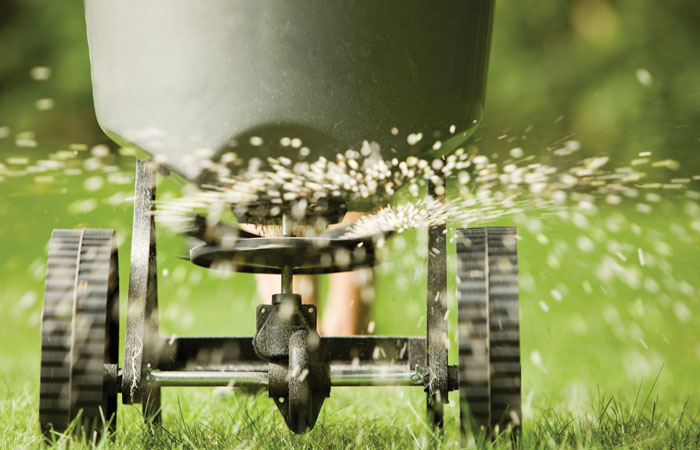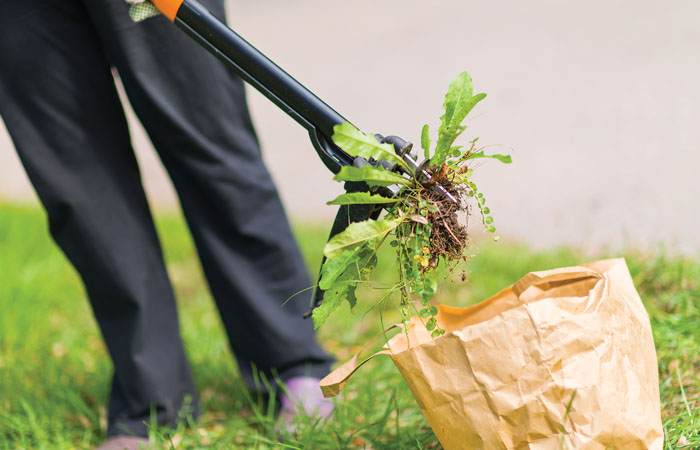There is an old saying that April showers bring May flowers. But when it comes to flowers and especially summer flowers, which flowers are the best? We will cover a few basic tips, terms and horticultural facts that can help you make the most out of your ornamental efforts this summer. Then, as promised, we will answer May’s most asked superintendent question: what kind of flowers do the best in the summer?
Annuals versus Perennials and Summer
(warm season) versus Winter (cool season) Flowers
Before we get into the actual varieties and cultivars of summer or warm season flowers, it is important to understand a few basic terms as they apply to flowers. First, there are annual flowers and perennial flowers. The difference in annual and perennial flowers has to do with their life cycle. Annual flowers germinate from seed, grow and die in one season and they will not regrow the following season. Whereas perennial flowers grow and flower in one season and then go dormant but will regrow from the roots the following season and can grow and recover for many years.
There is also a difference between summer or warm season flowers and winter or cool season flowers. The difference is about the timing of optimum growth for the plant. Warm season flowers/plants emerge in spring, lasting through the summer and die back at first frost, while winter or cool season flowers thrive in late fall throughout the winter, dying back when the warmer temperatures of spring/summer arrive. Quite often the best landscapes and floriculture (the science of flower cultivation) include a flower or color rotation that moves on a calendar rotating between winter and summer plantings, usually planting warm season flowers in April and cool season flowers in October. It also is popular to mix annual and perennial flowers together to accent the ornamental aesthetics, especially in high-visibility areas.

Examples of warm season annuals include vinca, begonia and coleus. Examples of warm season perinnials include daylilies, hosta and liriope. Examples of cool season annuals include pansies, violas and ornamental kale/cabbage. Examples of winter flowering perennials include jonquils, tulips, primrose and candytuft.
For our purposes in this article, we will focus on summer or warm season flowers and how to maximize your results and minimize your expenses.
Flower Bed Basics
Make sure that you give your flowers the best growing environment possible. This includes ensuring that your flower beds have quality soils and are well drained. I recommend amending your flower beds with the best soils you can afford. Many commercial potting soils are sterilized and have fertility and wetting agents (help with drought resistance) pre-mixed in proper ratios. If you are unsure about your soils’ characteristics, you can have a soil sample tested and know for sure.
Now for the insider tip just like for lawns, you can have a quick soil test done for just $12.00 by the Texas A&M Agrilife Extension Service, providing basic soil analysis and recommendations on the crop (in this case flowers) being grown. You can get all the information about soil testing, including how to take a proper soil sample at their website http://soiltesting.tamu.edu. The soil report will tell you the exact formulation of fertilizer to use and at what rate to apply to keep your plants/flowers healthy. To speed up the process, here is a quick guide on how to take a proper soil sample.
How to Take a Soil Sample
Tools Needed: Medium-sized container, soil sample bag(s) (these are available through Texas A&M Agrilife Extension Service http://soiltesting.tamu.edu), soil probe or hand spade, pen or black permanent marker, clipboard and paper (to record dates and notes).
Step 1: Inspect the area (flower bed); make sure it is not too wet.
Step 2: Use a soil probe or spade to remove a 3” to 4” (average crop root depth) deep section of soil from 10 or more places equally spaced, covering the entire area being sampled in a grid pattern. Remove any leaves, roots or debris and place only clean soil into your medium-sized container.
Step 3: Mix all of the samples in the container together completely to make sure the samples are mixed as one new soil; make sure the aggregate mix is relatively dry.
Step 4: Fill out all of the address and crop (be sure to identify your plants/flowers) information on the soil sample bag with a pen or black permanent marker and be sure to write legibly; take notes on location conditions and shipping information to build a data history.
Step 5: Fill the soil sample bag to the designated fill line (do not overfill).
Step 6: Follow the shipping instructions on the bag.
You should also verify the amount of sunlight your flower bed gets. The Sunseeker phone app is a great tool for this task and, as a general rule, flowers are divided into four groups as related to light requirements. They are Shade (<1 hour of sun), Part-Shade (2 to 4 hours of sun or filtered sun), Part Sun (5 to 7 hours of sun), and Full Sun (8> hours of sun). Finding the exact match for the light requirements of a plant is often a trial-and-error exercise, but these are good starting points.

Make sure that you water your flowers/plants properly. Know the water needs of the plants you cultivate. Remember that cacti use less water than begonias and full sun plants use more water than shade plants. There are inexpensive moisture meters that can tell you when to water. However, the old school tip is if you can hold the soil in your hand then squeeze it into a ball and the soil holds its shape, it’s okay, but if the particles feel dry and fall apart, water is needed. If you see the plant wilting or showing loss of color, water is needed.
Try to keep a consistent watering schedule such as watering to field capacity (this is the maximum amount of water that a soil can hold without puddling every two to three rainless days. Do not overwater! Many well-meaning novice gardeners kill their plants with kindness by overwatering. There are more scientific ways to water, such as calculating evapotranspiration. But for the homeowner, watching the weather and checking the plant’s general health regularly will work just fine. The daily appearance of an attentive gardener’s shadow can solve most plant problems.
Our Favorite North Texas Summer Flowers/Plants
For Annuals in Full Sun, try Dusty Miller, Lantana, Marigold, Vinca and Zinnia. For Perennials in Full Sun, try Day Lilies, Flax Lilies, Lavender, Russian Sage and Purple Heart. For Annuals in Part Sun, try Begonia (Dragon Wing), Coleus, Petunia, Potato Vine, Verbena. For Perennials in Shade, try Ajuga, Dracaena and Hosta. For Annuals in Shade, try Caladiums, Impatiens (New Guinea), Purslane and Wandering Jew. For Ornamental Grasses in Sun to Part Sun, try Muhly Grass, Pampas Grass and Purple Fountain Grass. There are many cultivars of these flowers/plants to choose from and they are available at your local nursery or garden center.
Best of luck in your summer flower garden … and remember to make time to play lots of golf as the days get longer.
Anthony L. Williams, CGCS, CGM is the Director of Golf and Landscape Operations at the TPC Four Seasons Golf and Sports Club Dallas at Las Colinas, he is an award-winning environmental author with a degree in horticulture. Anthony can be reached at anthony.williams@fourseasons.com.